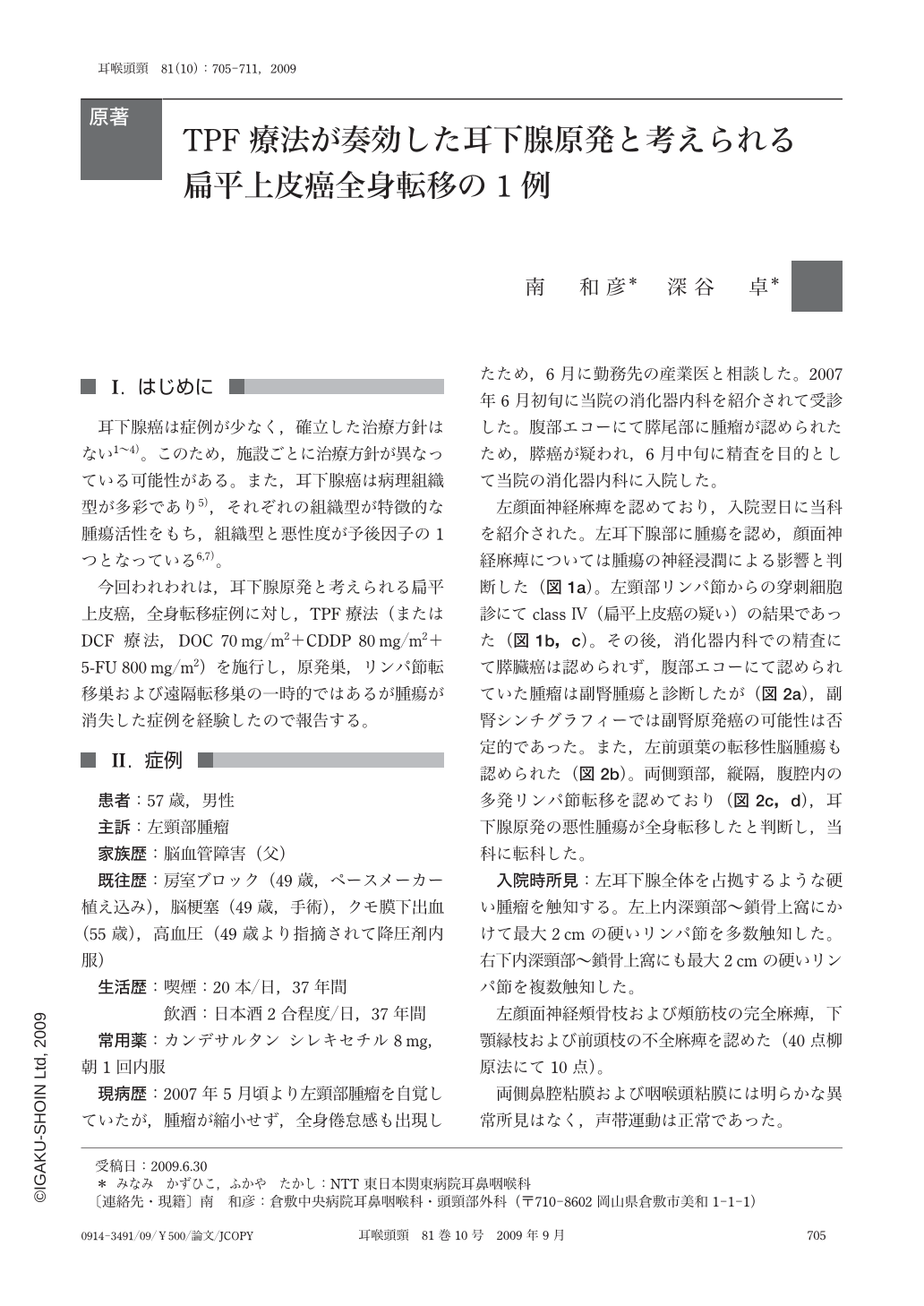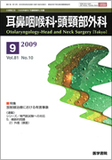Japanese
English
- 有料閲覧
- Abstract 文献概要
- 1ページ目 Look Inside
- 参考文献 Reference
Ⅰ.はじめに
耳下腺癌は症例が少なく,確立した治療方針はない1~4)。このため,施設ごとに治療方針が異なっている可能性がある。また,耳下腺癌は病理組織型が多彩であり5),それぞれの組織型が特徴的な腫瘍活性をもち,組織型と悪性度が予後因子の1つとなっている6,7)。
今回われわれは,耳下腺原発と考えられる扁平上皮癌,全身転移症例に対し,TPF療法(またはDCF療法,DOC 70mg/m2+CDDP 80mg/m2+5-FU 800mg/m2)を施行し,原発巣,リンパ節転移巣および遠隔転移巣の一時的ではあるが腫瘍が消失した症例を経験したので報告する。
Malignant parotid tumors are uncommon in head and neck malignancy. Thus,prospective management trials have not been performed and therapeutic strategy has not been established. The most important prognostic factors are tumor size,lymph node metastasis,histological type,and invasion of the facial nerve.
We have experienced squamous cell carcinoma in which the parotid gland was regarded as origin, with invasion of facial nerve, and systemic metastases. We have achieved a complete response albeit temporarily with 3 courses of TPF chemotherapy(cisplatin, 5-FU, and docetaxel).
TPF chemotherapy has been shown to be efficacious for head and neck squamous cell carcinoma in other countries,but it often causes adverse effects such as bone marrow suppression and compromised renal function. The evidences of the chemotherapy for head and neck cancer including malignant parotid tumors should be studied by comparative clinical trials in our country.

Copyright © 2009, Igaku-Shoin Ltd. All rights reserved.


